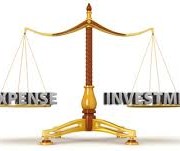Are You Prepared To Be Less Of A D*ckhead To Be A Better Leader?
As usual, the annual Conference on Culture and Leadership presented by Human Synergistics Australia earlier this week delivered the goodies, with some great speakers sharing their personal leadership and workplace culture experiences with an enthusiastic Sydney audience.
One of the many things on the day that resonated strongly with me arose out of a performance piece by the talented corporate dramatists from Coup, which successfully highlighted the challenges and opportunities typically presented by leadership and workplace culture change.
In the piece, one of the dramatists playing the role of “the Ghost of Business Future” (with all due respect to Charles Dickens), asked the struggling CEO if he wanted to become a better leader in order to save the business from its projected downward spiral. Of course he said yes, to which the Ghost of Business Future responded quite simply “Great…. so are you prepared to be less of a d*ckhead?”
The laughs from the audience suggest that I wasn’t the only one for whom this comment resonated. As much as we might typically use more accepted corporate language, structured models and frameworks to diagnose and improve leadership effectiveness, I couldn’t help but think that this phrase, as undiplomatic as it might be, provides some fundamental truths. Read more →










